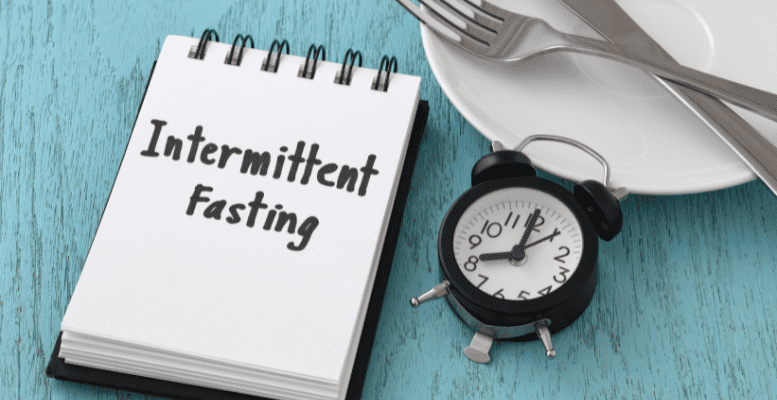Once upon a time, in a world filled with diets and quick fixes, a new hero emerged, and its name was intermittent fasting (IF). Unlike its fad diet predecessors, IF proved to be a sustainable, adaptable, and enjoyable way to lose weight, increase energy, and improve overall health. If you’re ready to embark on your own IF adventure, join me as we journey through the stages of intermittent fasting.
Stage 1: Understanding Intermittent Fasting
Our tale begins with the basics. Intermittent fasting is a pattern of eating that cycles between periods of fasting and eating. This is really a lifestyle but not a diet. IT doesn’t tell you what to eat, but rather when to eat. There are several popular IF methods, which we’ll discuss later, but they all share a common goal: to help you become the hero of your health story.
Health Benefits of Intermittent Fasting
As you set off on your IF journey, it’s essential to know the benefits you’ll reap along the way. IF’s health benefits are backed by science and include:
Weight loss
Improved insulin sensitivity
Increased energy
Enhanced mental clarity and focus
Reduced inflammation
Autophagy (cellular repair)
Lowered risk of chronic diseases
With these benefits in mind, let’s move forward to the
different IF methods that you can choose from.
Stage 2: Choosing Your Intermittent Fasting Method
As you venture into the realm of intermittent fasting, you’ll encounter various methods to suit your lifestyle and preferences. Here are some popular IF methods:
The 16/8 Method
The 16/8 method is the most common and straightforward IF approach. You fast for 16 hours each day and eat within an 8-hour window. For example, you can choose to eat between 12 PM and 8 PM and fast from 8 PM to 12 PM the next day.
The 5:2 Method
The 5:2 method involves regularly eating for five days a week and restricting your calorie intake to 500-600 calories on the other two days. For instance, you might normally eat from Monday to Friday and fast on Saturday and Sunday.
The Eat-Stop-Eat Method
This method requires a 24-hour fast once or twice a week. You can choose to fast from breakfast to breakfast, lunch to lunch, or dinner to dinner. It’s a more challenging method but can lead to greater benefits.
The Warrior Diet
The Warrior Diet is based on the ancient warrior’s eating pattern, which consists of fasting during the day and feasting at night. You’ll eat small amounts of raw fruits and vegetables during the day and have one big meal in the evening.
Once you’ve chosen your IF method, it’s time to embark on
the next stage of your journey: preparation.
Stage 3: Preparing for Intermittent Fasting
Before diving into your IF adventure, it’s crucial to mentally and physically prepare. Here are some tips to ensure a smooth transition into your new lifestyle:
Set realistic goals: Determine your primary objectives for IF, whether it’s weight loss, better mental clarity, or improved overall health. Be realistic and set achievable milestones.
Plan your meals: Create a meal plan that includes nutritious, balanced meals to maximize your IF benefits.
Stay hydrated: Drinking enough water is essential during your fasting periods. Herbal tea and black coffee (without sugar or creamer) are also allowed.
Ease into it: Begin with a shorter fasting period and gradually increase it as your body adapts.
Stage 4: The Fasting and Feeding Cycle
Now that you’re prepared, it’s time to embrace the IF lifestyle by alternating between fasting and feeding periods. During your fasting window, your body will start using its fat stores for energy, leading to weight loss and other health benefits.
Fasting Window
During the fasting period, you’ll abstain from consuming calories. Drinking water, black coffee, and herbal tea is allowed. It’s essential to listen to your body and adjust your fasting periods if necessary.
Feeding Window
In the feeding window, you’ll consume all your daily calories. Focus on nutrient-dense, whole foods, and avoid overeating. Remember that IF is not an excuse to binge on unhealthy foods.
Stage5: Overcoming Challenges and Staying Consistent
I will tell you this is never easy at first but will get easier as the days go on. These are some common challenges I ran into, and you may also.
Hunger: Initially, hunger pangs might be challenging, but they will subside as your body adjusts. Stay hydrated and keep yourself busy during fasting periods.
Social events: Plan your eating window around social events or adjust your fasting schedule to accommodate special occasions.
Low energy: Fatigue may occur during the early stages of IF, but your energy levels should improve as your body adapts. Ensure you’re consuming nutrient-rich foods during your eating window.
Consistency is key to success with intermittent fasting. Stick to your chosen method and be patient with the results. Adjust your approach if necessary, but always prioritize your health and well-being.
Stage 6: Celebrating Your Success and Maintaining Your New Lifestyle
Congratulations! You’ve reached the final stage of your IF journey. It’s time to celebrate your achievements and maintain your new lifestyle. Remember that intermittent fasting is not a quick fix but a sustainable way of living.
Keep track of your progress, listen to your body, and make adjustments as needed. As you continue to enjoy the benefits of intermittent fasting, you’ll find that it becomes second nature – a natural and enjoyable part of your life.
In conclusion, the stages of intermittent fasting include understanding IF, choosing your method, preparing for IF, alternating between fasting and feeding, overcoming challenges, and maintaining your new lifestyle. By following these stages and staying consistent, you’ll become the hero of your health story, reaping the benefits of this powerful lifestyle approach.
This post may contain affiliate links which means I may receive a commission for purchases made through links. I will only recommend products that I have personally used! Learn more on my Privacy Policy Page.
